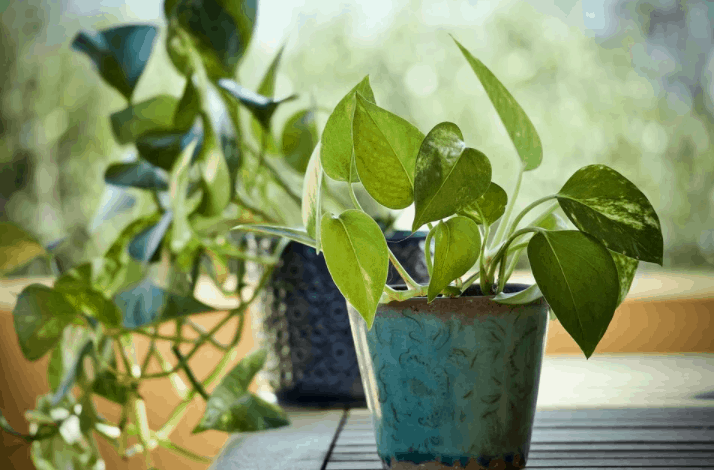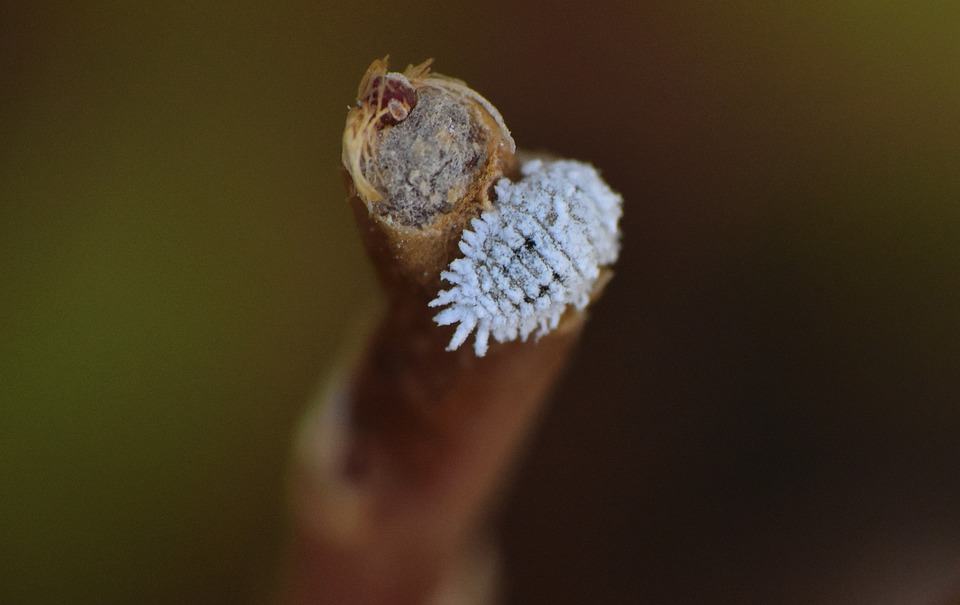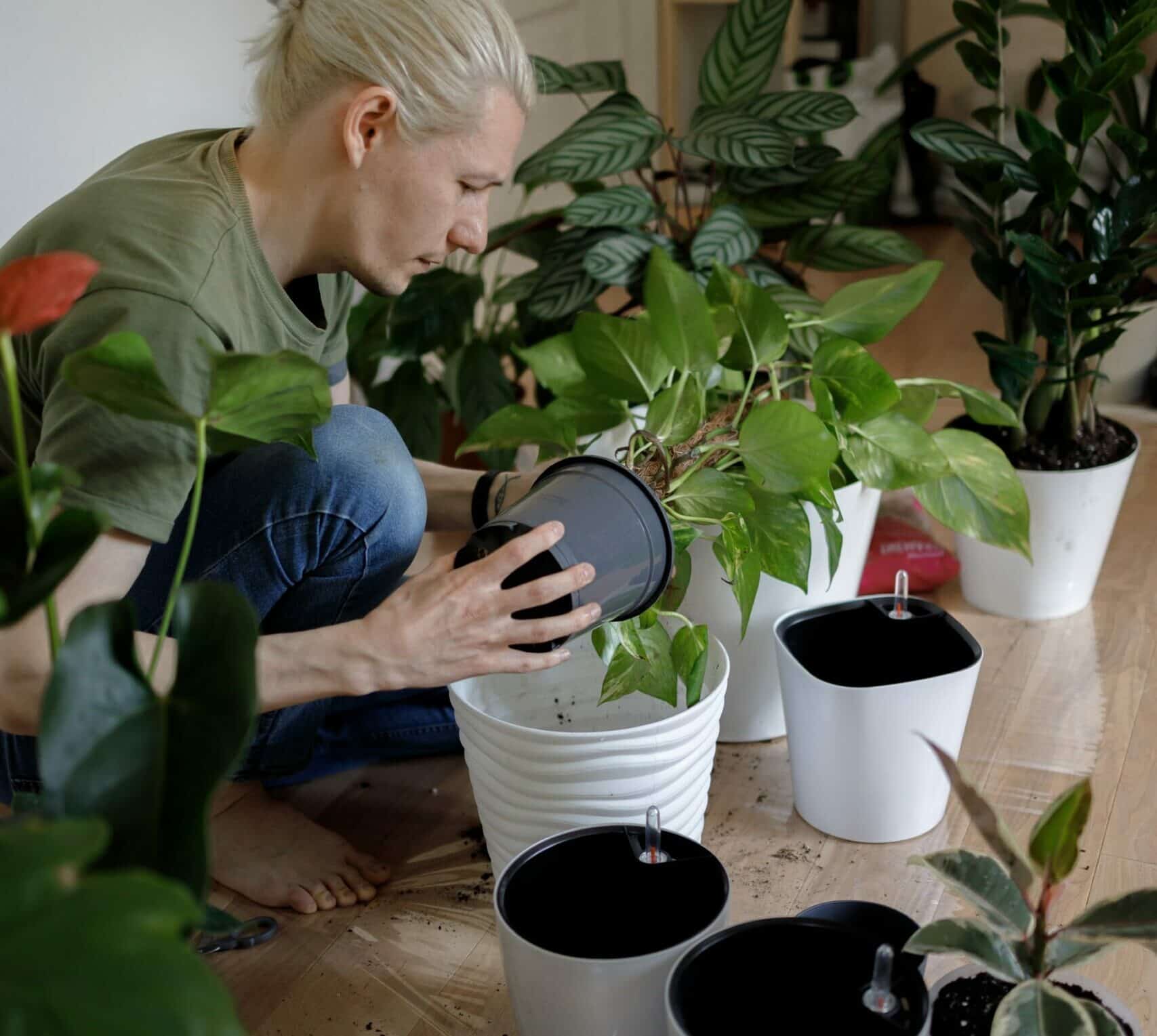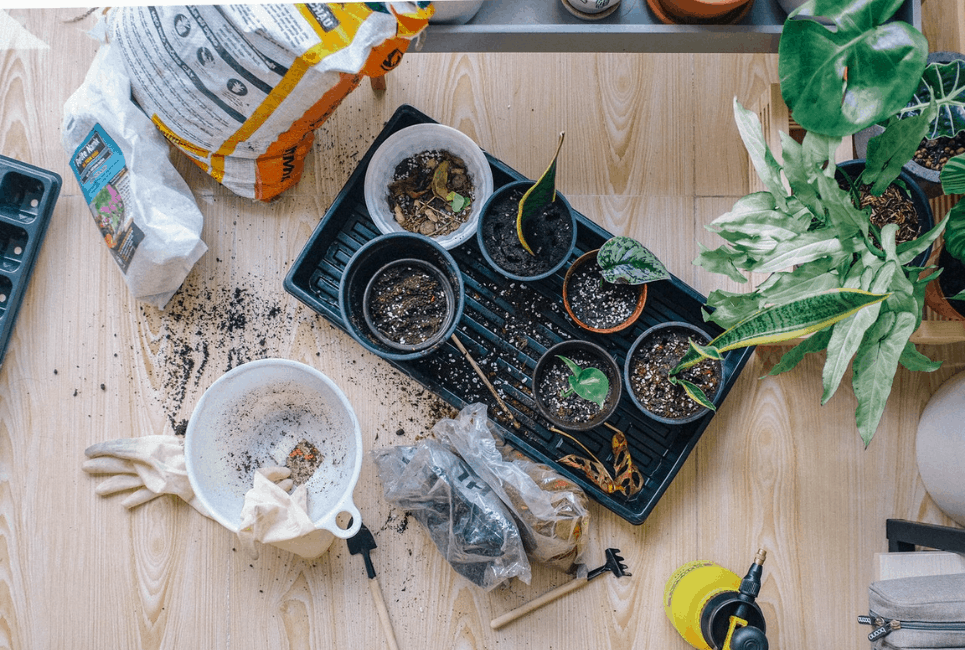- How to Propagate Monstera Guide: The Three Ways to Succeed - September 17, 2021
- Escargot Begonia: Why Is The Rex Begonia So Rare? - August 31, 2021
- Rieger Begonia: When You Can Expect The Hiemalis Begonia To Flourish - August 31, 2021
Pothos plants are typically very easy to care for houseplants. Just give them the right amount of sunlight and water and they will grow strong and beautiful. But even though these are easygoing plants they do have some other minor care requirements that should be addressed regularly. One of these care requirements is repotting.
Reasons to Repot
There are several reasons why a Pothos plant should be repotted and it is important to understand and know how to detect these if you want to have a healthy plant. Let’s take some time to look into each of these reasons, and then, discuss how to repot a Pothos plant.
Plant Growth

The first and main reason why you might need to repot a Pothos plant is that it has outgrown its plant container. Pothos plants will outgrow their plant containers every two to three years. If your Pothos plant is an extremely quick grower it may need to be repotted sooner.
These are the signs to look for to know whether or not your plant has outgrown its container:
- A plant that is too heavy or too large in size for its container
- Crowded roots
- Roots that are balled together
- Roots that are growing out of the soil
- Soil that is pulled away from the inside of the plant container
- Stunted growth
If your Pothos plant is showing any of these signs, it is time to consider putting it into a new plant container.
Plant Health
The second reason why you might need to repot a Pothos plant is to help it recover from a disease or pest infestation. These include:
Bacterial Wilt
This disease can spread quickly and is highly contagious too. Evidence of bacterial wilt on a Pothos plant is blackened stem veins and leaves that are wilting. Not only will this disease require that you repot your Pothos plant, but it will also require that you remove infected leaves, stems, and roots, wash the plant (roots and all), and apply at least one dosage of Wilt Stop to it.
Mealybug Infestation

These insects are frequent invaders of many types of plants. Look for cotton-like spots on your plant’s leaves and stems to identify the type of pest you have to deal with.
With normal infestations, you should not need to repot your plant; you can simply clean off the leaves with a cotton ball dipped in alcohol and water, and then, coat the leaves in neem oil to prevent future infestations. However, if the infestation is severe, you should repot the plant as well.
Root Rot
This plant disease is caused by improper watering methods. Usually, this means that your plant is getting way too much water and its body is now saturated by water. Evidence of root rot are:
- Mushy stems
- Moldy soil
- Soil that has pests crawling in and on it
- Roots that are brown and mushy
- Leaves with brown spots
- Leaves that smell like mildew
- Wrinkled leaves
- Wilting leaves
- Translucent leaves
- Mushy leaves
- Leaves that are curled
If your Pothos plant is dealing with any of these, you may need to repot it. Before repotting it, you will also need to cut off any infected leaves, stems, and roots with a sterile cutting utensil.
Scale Insect Infestation
These insects will show up on your plant’s leaves and stems as small, brown, round lumps. With normal infestations, you should not need to repot your plant; you can simply spray them off the leaves with a hose, and then, coat the leaves in neem oil to prevent future infestations. However, if the infestation is severe, you should repot the plant as well.
Spider Mite Infestation
These insects will evidence their presence on your plant with their webbing stretched across stems and leaves. With normal infestations, you should not need to repot your plant; you can simply wipe them off the leaves with a clean towel and a spray bottle filled with a quart of warm water, 1 tsp. of dish soap, and 2 tsp. of neem oil. However, if the infestation is severe, you should repot the plant as well.
The Pothos Plant Repotting Method

Repotting a Pothos plant is actually a very simple process. No matter what reason has caused you to repot your Pothos plant, it will be done in basically the same way. Let’s walk through the steps for successful repotting now.
- Select a new, clean, and well-draining plant container if your Pothos plant has outgrown its current container (it is recommended that you get a new container that is 2 inches larger in diameter than the plant’s current container)
- Carefully remove your Pothos plant from its current plant container
- Trim off any diseased or infected roots, stems, or leaves, or, cut off a few long stems for propagation purposes
- Clean the plant container if it is a container that is being reused
- Fill the plant container with well-draining potting soil
- Create a hole in the middle of the soil for the plant to be set into
- Carefully set the plant into the hole
- Cover the plant’s roots with soil and ensure that the plant is secure in its new home
- Water the plant and place it in bright, but indirect sunlight
Note: Repotting should be done in early springtime if possible. This will reduce the risk of the plant getting shocked by the move.
FAQs
Question: What Type of Potting Soil is Best to Use with a Pothos Plant?
Answer: All Pothos plant varieties should be planted in potting soil that is well-draining and well aerated. Happy Frog potting soil is an excellent choice for all Pothos varieties since it will drain off excess water but still hold a little moisture. Note: Some Pothos varieties, such as Glacier Pothos, also require soil within certain pH level ranges. It is easy to test soil pH levels with a Soil pH Meter, and then, adjust them by adding organic materials.
Question: How Should a Pothos Plant be Watered to Prevent Disease?
Answer: Pothos plants should be watered in the soak and dry method if possible. This method allows the plant to get adequate amounts of water to its root system without oversoaking the roots or spraying the plant’s leaves with water which can cause them damage. Here are the very simple steps for watering plants in the soak and dry method:
• Test the plant’s soil to make sure it actually needs a drink (if the top half of the plant’s soil is dry, it can use a drink, but if not, wait another day)
• Fill a large container or bathtub with water
• Remove any saucers or water trays from under the plant container (the drainage holes need to be open and accessible)
• Set the plant container into the water but ensure that the water does not overflow the top of the container (the water should only touch the soil through the drainage holes in the bottom of the plant container)
• Allow the plant to soak in the water for 15 minutes
• Remove the plant from the water and allow the excess water to drain out from the drainage holes
• Set the plant back where it belongs
Note: Pothos plants are tropical plants that can benefit from extra humidity in their environment. Safely and comfortably provide this for your Pothos plant either by setting a pebble tray under it or a plant humidifier next to it or by clustering it next to other tropical plants.
Question: What Type of Plant Container Should a Pothos Plant be Set Into?
Answer: Not only should the soil used with a Pothos be well-draining but also, the plant container should be able to drain off water. When you select a plant container for your Pothos plant, be sure that its bottom has drainage holes in it.
Recommended Products:
• Growneer Ceramic Hanging Planter – Pothos plants are vining plants that look great in hanging planters. Try this chic, simple, and well-draining planter with your Pothos plant.
• Greenaholics Ceramic Plant Pot – If you prefer to keep your Pothos plant on a shelf or table, try this lovely plant pot. Its stylish design also features good drainage.
Question: Should Pothos Plants be Fertilized?
Answer: While these plants are not heavy feeders, they can benefit from a little fertilizer during the spring and summer growing season. Choose either a balanced fertilizer, such as a 5-5-5 fertilizer, or worm compost for this type of plant.
Question: What Amount and Type of Sunlight and Heat do Pothos Plants Require?
Answer: Since these are tropical plants, you can expect them to grow best in warm and humid weather. They should be set in temperatures that range between 65 and 75 degrees Fahrenheit with humidity levels of at least 50%. You can easily meet these needs with a Plant Humidifier and a Plant Heat Mat. This also means that Pothos plants should not be exposed to extremely cold temperatures. Check which USDA Hardiness Zone you live in and plan to move your Pothos plants inside for the winter if you do not live in zones 10 through 12.
As far as sunlight goes, these plants have delicate leaves that will dry out and burn if they are exposed to direct sunlight. The best type of sunlight is bright but indirect. If you are unsure of what this type of sunlight is, refer to this guide for indoor plant lighting and compare the information found in it with what a light meter or a light meter app reads inside your home.
Question: Are There Ways to Prevent Diseases and Pest Infestations?
Answer: Yes, there are preventative measures you can take to prevent your plants from becoming a breeding ground for pest infestations and infectious diseases. Here are few tips for healthier Pothos plants:
• Mix the potting soil with some diatomaceous earth.
• Water your plants in the proper method to avoid overwatering them.
• Fertilize your plants in the proper method to avoid burning them.
• Inspect your plants at regularly scheduled times to ensure that you will catch any signs of an infection or an infestation before it becomes serious.
• Schedule regular plant cleaning sessions where you apply neem oil to the plant’s leaves.
• Provide your plants with the proper amount of sunlight, heat, and humidity.
Question: How Can I Propagate a New Pothos Plant When I Repot My Old Plant?
Answer: Pothos plants are some of the easiest plants to propagate, and while this can be done anytime, it is extra convenient to begin growing new plants when you are repotting your old plant. Here’s how:
• Cut off a healthy 3-inch long stem with a sterile cutting utensil (check to make sure that the stem has at least one node and one leaf)
• Set the newly cut stem into a clear glass of clean water (you can skip this step and go to step 6 if you prefer to propagate directly into soil)
• Set the glass in a place that receives plenty of bright but indirect sunlight
• Change the water weekly
• Once roots begin to grow on the stem cutting, prepare to move it to soil
• Fill a well-draining plant container with well-draining soil
• Remove the stem cutting from the glass of water and set it into the soil
• Secure the new plant into the soil
• Water the plant
• Set the plant container in a place that receives plenty of bright but indirect sunlight
• Treat it as a mature plant
Question: What Should I Do If My Pothos Goes Into Shock from Repotting It?
Answer: It is rare for a Pothos plant to go into shock from being repotted, but it is still a possibility. If you have recently replanted your Pothos plant and it has started to wilt, turn brown or yellow, and drop leaves, it may be in shock. Here are few ways to deal with this issue:
• Give the plant a sugar-water solution
• Prune the plant so that it can focus on growing its roots
• Keep its soil moist but not soggy
• Watch and wait for it to recover
To limit the risk of shock when you repot your Pothos, follow these tips:
• Avoid touching or disturbing the root system
• Transfer as much of the root system as you can
• Give the newly repotted plant a big drink of water
• Keep the plant’s roots moist during the repotting process
Repotting Pothos Guide: In Conclusion
All varieties of Pothos plants feature an easygoing personality that makes them ideal for gardeners of all skill levels and stages of life. These plants are typically very hardy and are wonderful to keep around the house for their beauty and for their air-purifying qualities. Because of this, repotting a Pothos plant is less a chore and more of a labor of love.

